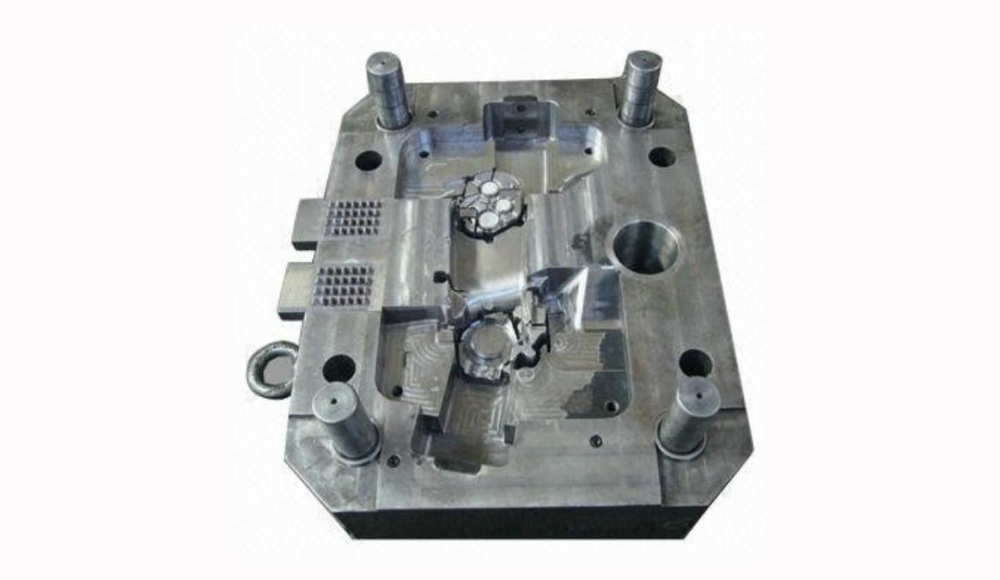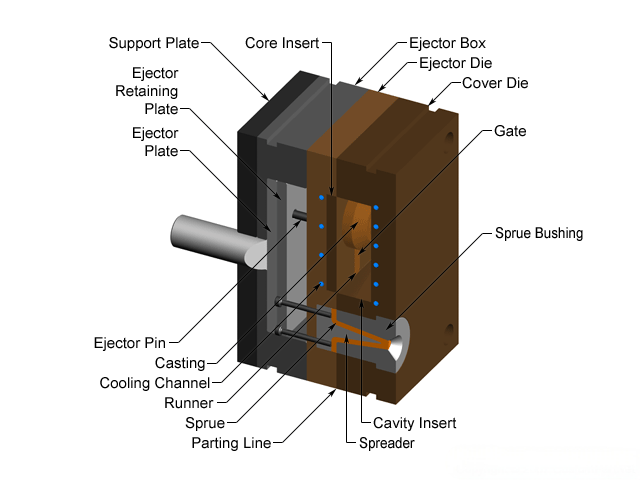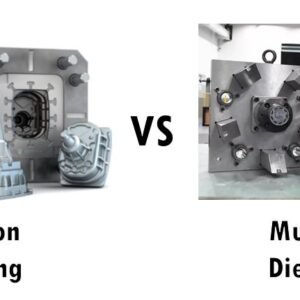Il casting da morire è un processo di produzione critico ampiamente utilizzato in settori come il settore automobilistico, aerospaziale, elettronica, e beni di consumo. The foundation of high-quality die casting lies in optimized tooling—the molds used to shape molten metal into complex parts. Superior tooling directly influences product tolerances, mold lifespan, production efficiency, and overall project return on investment (ROI).
Understanding Die Cast Tooling
Die cast tooling, O die cast molds, comprises precision-crafted steel molds designed to withstand high-pressure injections of molten metal. Al raffreddamento, the metal solidifies into the intended shape, delivering consistent and precise components. The molds typically consist of two or more parts, enabling easy extraction of the finished casting.
Common die casting mold types include:
Prototyping Dies: Used for initial testing and validation.
Unit Dies: Suitable for smaller-scale production and adaptable for various components.
Rapid Tooling Dies: Enable fast turnaround for quick product testing.
Trim Dies: Specialized molds for trimming excess material from cast parts.
Production Dies: Engineered for high-volume, long-term manufacturing runs.
Die Casting Mold Design Process
The mold design process for die casting involves meticulous planning and several crucial steps:
Preliminary Phase: Initial product assessment, feasibility analysis, and specification determination.
Determining Number of Cavities: Deciding how many parts the mold should produce per injection cycle based on production volume.
Assessing Projection Area: Evaluating the required mold size and pressure considerations.
Volume and Shape Analysis: Ensuring design compatibility with production goals and mold performance.
Semi-empirical Simulation: Computer-aided simulation to identify potential casting issues, such as air pockets, flow irregularities, and thermal inconsistencies.
Manufacturability analysis, particularly using advanced software, helps anticipate issues with metal flow, cooling rates, and stress points, enabling proactive adjustments to mold designs before production begins.
Designing Mold for Manufacturability (DFM)
Progettazione per la produzione (DFM) integrates engineering and design practices that streamline mold production, ridurre i costi, and enhance overall mold durability and performance.
Key parameters in die casting mold DFM include:
Angoli di tiraggio: Sufficient angles for easy removal of cast parts, reducing mold wear.
Radii and Fillets: Smooth internal and external edges to avoid stress concentrations and improve metal flow.
Bosses and Ribs: Structural reinforcements to enhance casting integrity and strength without excessive material use.
Linee di separazione: Proper placement to minimize flash and facilitate easy part extraction.
Effective DFM ensures fewer design revisions, reduced production delays, and improved product quality.
Mold Care and Maintenance
Regular maintenance is essential to maximizing mold life and ensuring consistent product quality. Die casting molds endure repeated cycles of heating and cooling, leading to potential issues such as:
Core Wear: Gradual erosion of critical mold features.
Gate Erosion: Wear at points where metal enters the mold.
Maintenance strategies include:
Scheduled inspections and preventative maintenance.
Cleaning molds regularly to avoid buildup that can impact quality.
Repairing or refurbishing worn areas promptly.
Per esempio, multi-slide zinc molds typically withstand around one million shots, while aluminum molds manage approximately 200,000 shots. Proper maintenance practices can significantly extend these lifespans.
Maximizing ROI from Die Casting Mold Optimization
Investing in high-quality molds directly translates into substantial long-term savings. While initial costs may be higher, optimized tooling reduces frequent maintenance needs, minimizes production downtime, and significantly decreases scrap rates.
Strategies for maximizing ROI include:
Flexible Draft Angles: Allowing slightly larger angles in non-critical areas improves mold durability.
Tailored Tolerances: Avoid overly tight tolerances unless absolutely necessary, reducing complexity and cost.
Early Supplier Collaboration: Engaging mold suppliers and engineers early in the design phase to identify potential issues and solutions before mold production.
Conclusion and Call-to-Action
Optimizing die casting molds is vital for achieving precision, efficienza, and profitability in your manufacturing process. Collaborating with experienced professionals ensures the development of robust, durable molds tailored to your specific project needs.
TOPS Precision offers expert die casting mold optimization services, backed by extensive experience, tecnologia all'avanguardia, and rigorous maintenance practices. Contact us today to discuss how we can support your next project with high-quality, optimized tooling solutions.
Per saperne di più:
Die Casting Services by TOPS Precision





1 pensato a “Ottimizzazione della stampo di fusione: Una guida completa”